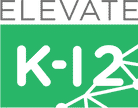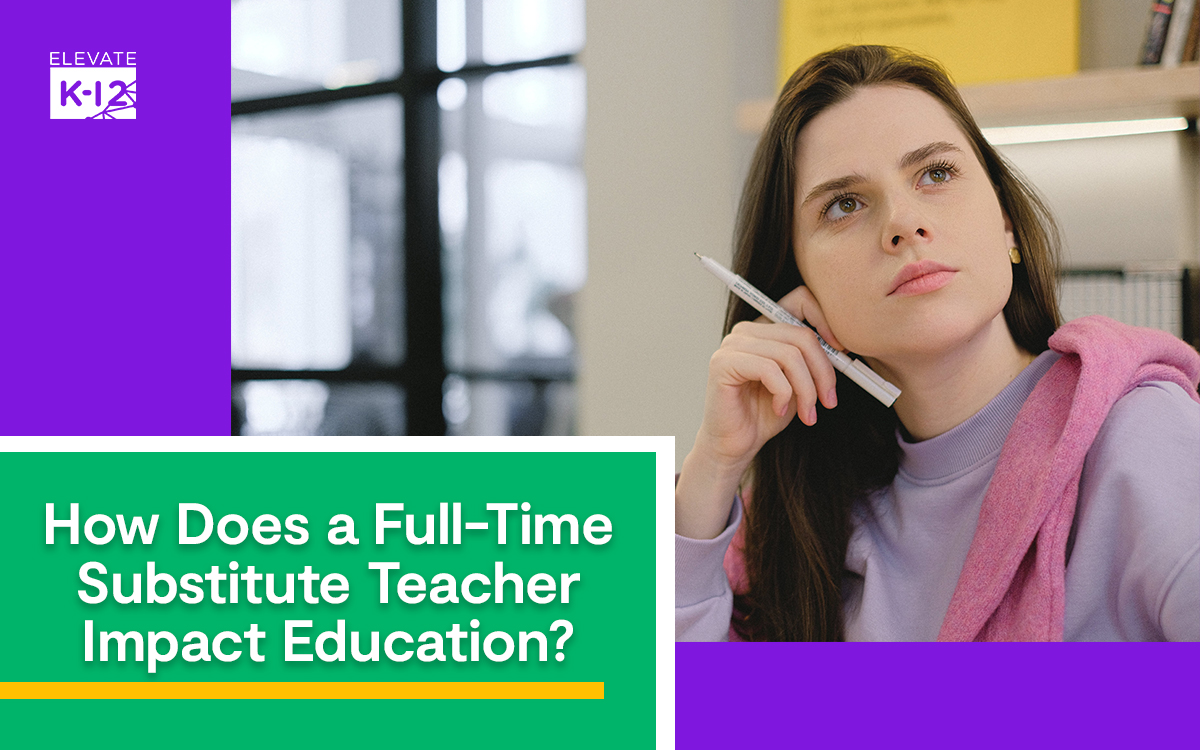Public and private schools hire roughly 600,000 substitute teachers each year to fill in for regular teachers.
Why so many fill-ins? The U.S. is experiencing a rampant teacher shortage, and substitute teaching is a common short-term solution that some school districts lean on to fill vacant teaching positions temporarily.
While this solution does have some benefits — namely, putting an educator in the classroom quickly — it’s not without its challenges, which make it far from a sustainable long-term solution for teacher shortages.
Here, we’ll look in-depth at full-time substitute teachers, their roles in the education landscape, and the benefits and challenges of working with them.
What Is a Full-Time Substitute Teacher?
As the name suggests, a full-time substitute is a teacher who takes on long-term assignments. They cover a regular teacher’s duties while they’re absent, typically handling classes every day.
Full-time substitutes can also be referred to as long-term subs because they fill in during long-term teacher absences, such as medical, maternity, or paternity leave. When this happens, a long-term substitute teacher takes over lesson plans, parent-teacher meetings, assessments and grading, and any other role a regular teacher would take.
Some school districts employ permanent substitute teachers. These teachers typically remain in the same school for the whole academic year, taking on duties as they arise. They can fill in for long-term or short-term teacher absences and stand in for teachers running late, ensuring students have a teacher presence at all times. Depending on their reasons for filling in, they may or may not be in the same class every day.
Conversely, part-time substitutes are typically on call. They only step in for a short period — it could be a day or a week, depending on the regular teacher’s absence. Typically, a part-time or short-term substitute follows the teacher’s lesson plans, as they’re only on temporary placement.
The Role’s Impact on Educational Quality and Continuity
Full-time substitute teachers have become valuable partners for school districts as they facilitate learning continuity in the face of the nationwide teacher shortage. Leaning on these professionals has been one way for districts to mitigate learning loss and keep students on course until they can hire permanent teachers.
They also help reduce the burden on existing certified teachers by allowing schools to maintain small classrooms, even during long-term teacher absences. A full-time substitute is a quick solution to ensure students will continue to receive instruction in their classroom. When they have a long-term engagement that can give students enough time to adjust to their teaching style and establish some rapport, but not when they’re bouncing around. Sometimes a full-time sub can become a known figure on campus, but still, many kids won’t encounter them as they would their full-time teacher.
Benefits of Employing Full-Time Substitute Teachers
Hiring full-time substitute teachers has become a common short-term solution to teacher shortages due to its quick accessibility. While there are more effective solutions, employing full-time substitute teachers can offer certain benefits, including:
Consistency for Students
Consistency is vital for learners, especially those in elementary, middle, and high school, as it prevents learning disruptions. Full-time substitutes provide a consistent presence in the school, which can be less disruptive for students compared to having different substitutes regularly.
With full-time substitutes, students may not have to adapt to different educators’ teaching styles and behaviors as often. Some get the same full-time substitutes in their classes, facilitating trust and rapport-building. This can increase student participation in the classroom and foster a positive learning environment, promoting better outcomes.
However, this consistency may not always be guaranteed. Some students may only receive instruction from the full-time sub occasionally and establish a relationship with them more similar to any part-time sub. Subs, in general, also have high in-term turnover rates.
Flexibility in Staff Planning
Many schools have had to contend with the lack of qualified teachers for so long that they accept the fact that they may not be able to offer a class. Those that do sometimes end up doubling up classrooms just to ensure learners have professional instruction, putting a heavy burden on the teachers responsible for these expanded classrooms.
Permanent full-time subs offer flexibility in staff planning, preventing such scenarios. Since they report to work every day, like full-time teachers, they can help cover unplanned absences or long-term leaves, allowing schools to operate with minimal disruptions.
With substitutes on standby, you can avoid combining classes and running unsupervised lessons. You can also save time and resources by eliminating the need to train new substitutes on district policies and procedures — full-time substitutes are already familiar with them, so they can step right into teaching.
It’s important to note, though, that most schools don’t have the budget to hire full-time standby subs. And because there are so many absences and vacancies already, a school’s full-time sub staff (if they have one) doesn’t usually have the bandwidth to fill long-term sub openings.
Specialized Skill Sets
Since a long-term sub is immersed in your school every day, they can become more integrated into the school’s routine than part-time educators. This gives them an upper hand in maintaining your district’s education quality.
A long-term sub also has the unique opportunity to teach multiple subjects as schools’ needs change, allowing them to develop a versatile skill set that allows them to adapt and sufficiently fill opportunity gaps in a pinch as needed.
However, while full-time substitute requirements vary between states, many only require these educators to have a high school diploma, GED, or bachelor’s degree (not necessarily teaching certifications or licensure). This means some schools work with individuals who may not be as adaptable, knowledgeable on current teaching methods and standards, or have the same specialized skill sets as certified educators. They lack the deep expertise of credentialed teachers, which may negatively impact learning experiences and make them less effective in teaching certain subjects.
Challenges That Keep Full-Time Substitute Teachers From Being Fully Effective
Working with substitute teachers can be a great way to bridge short-term gaps in teacher availability. However, leaning on full-time substitutes for long-term solutions presents some challenges:
Adapting to Different Classroom Environments
Many schools use the same substitute teachers for different subjects and grade levels, as they typically fill in for all absent teachers. This requires a quick adaptation to different curriculums and classroom environments: Substitutes must acquaint themselves with different students, identify their preferred learning styles, and learn each class’s curriculum, which can be quite stressful.
Taking on too many classes can, over time, cause burnout and, ultimately, an unwillingness to fill vacant teaching positions or cover for absent teachers. This situation also affects students. Adapting to different teachers can be confusing and disrupt learning, affecting the quality of education in your school community.
Less Resources
Substitute teachers rarely have the same resources as regular teachers. Only 11% of school districts provide professional development opportunities for their substitutes. This, combined with the fact that many substitutes don’t have formalized teaching credentials, puts them at a disadvantage. They may have trouble effectively managing classrooms, limiting the likelihood of providing quality education.
Further, subs may lack comprehensive student information, like special accommodations or needs, especially when covering for unexpected absences. This can make it difficult for them to address the diverse needs of different classrooms and students.
Maintaining Lesson Consistency
Despite being full-time, many substitutes may move between different schools and classes, making it hard to provide consistent education and support to the same group of students over time. This is detrimental to both students and educators.
A lack of consistency can disrupt students’ learning flow, as they must first adapt to their new teacher’s teaching style to build on their knowledge. This can derail learning, increase frustrations in the classroom, and ultimately impact academic performance.
For the substitutes, inconsistency can make it challenging for them to adapt to different classroom environments. This can cause a lot of stress, affecting their teaching experiences. Inconsistency can also make it difficult for substitutes to build rapport with students and manage classroom behavior. Some students may take advantage of this situation to test authority, which may disrupt the learning environment.
Less Familiar With Individual Student Needs
Substitutes often don’t understand their students’ academic weaknesses and strengths, as they don’t spend too much time in a single classroom. Unlike regular teachers, who have months or years of history with their students, substitutes and students must learn about each other from scratch whenever they’re assigned to new classrooms. Because substitutes are often placed at the last minute, they often lack sufficient time to personalize instruction, affecting students’ learning outcomes.
The lack of familiarity with students can also be stressful for substitutes. Trying to build relationships and understand the unique needs of an entire classroom full of students in a short period can be overwhelming, causing a lot of frustration.
Exploring Modern Solutions To Full-Time Substitution for a Balanced Approach
While substitute teachers are undoubtedly valuable for school districts, they present challenges that are hard to ignore. This makes it essential for school districts to consider alternative solutions, like Elevate K-12.
Elevate K-12 aligns with the needs of modern education systems. Our curriculum is written by an experienced in-house academic team and audited by an independent third-party organization to ensure it aligns with national and state standards. As such, you can rely on us for expert classroom management and lesson plans in numerous subject areas.
Further, we provide fully certified LIVE synchronous teachers for the entire school year or course semester.
Our teachers undergo extensive training, which gives them a head start in terms of adaptability. Elevate ensures consistent, reliable, quality teaching. Educators are vetted for experience and subject matter expertise and receive regular training, so their teaching methods are the best for the material.
Our LIVE teaching helps ensure fewer disruptions in the learning environment for students. Subs may come and go through the term, but with Elevate, kids will get consistent, quality LIVE teaching for the entire term, whereas full-time sub schedules may vary.
Schools can use Elevate as a solution to teacher shortages that future-proofs their staffing plans from unforeseen vacancies. You no longer have to scramble to fill openings as they arise — instead, you have a plan in place and a system to address vacancies and onboard quality teachers.
Explore Effective Alternatives Beyond Full-Time Substitute Teachers
Full-time substitutes can ensure learning continuity and flexibility in staffing. However, working with them can be challenging: They may lack the formalized training you’d like and often don’t have the time to adapt to different classroom environments and determine individual student needs.
With solutions like Elevate K-12, you can bypass these challenges. Elevate K-12 provides access to great teachers with the resources and technology required to make learning effective, fun, and engaging. Our educators are licensed and undergo continuous training to improve their teaching skills, so you can rest assured your students are in the right hands.
Learn how Elevate K-12’s LIVE teaching solutions can be the best alternative to full-time substitutes in your district.

